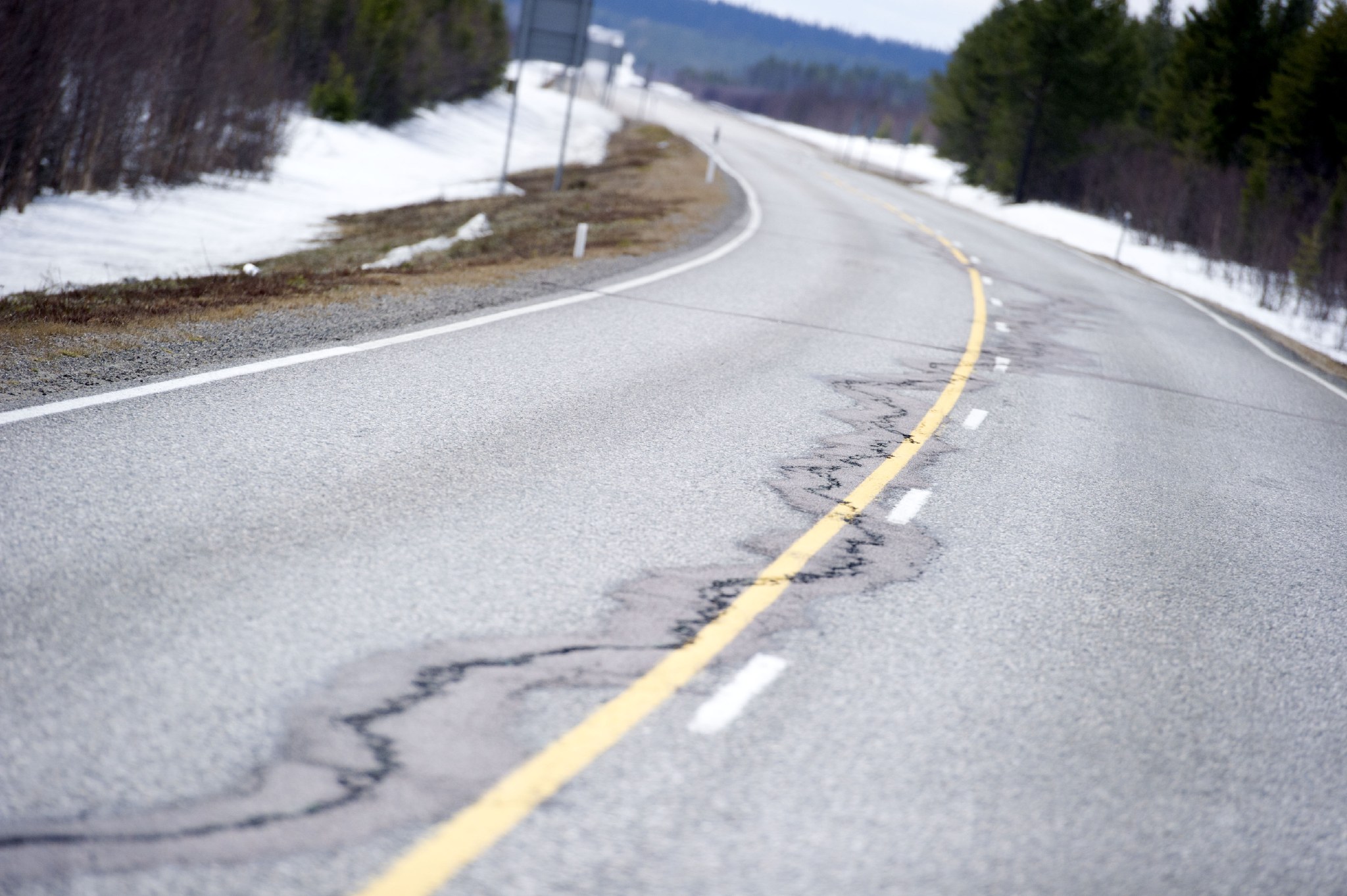Damage to paved roads
Different types of asphalt coatings are used as road surfaces in Finland. Road markings are used on paved roads to improve road safety. Road surfaces and road markings get worn away by traffic and deteriorate over time, and road users can identify different types of damage on the road surface. There are different mechanisms leading to the generation of each type of damage. The road operator monitors the condition of road surfaces and road markings using various measurements and inventories. By collecting this data on road conditions, the scope and location of the repair needs can be assessed for use in drawing up repair programs.

Damage to road surfaces
Rutting
There are many reasons why road surfaces become rutted. On busy main roads, the wear and tear caused by studded tyres is one clear factor. Wear and tear is monitored by taking annual measurements and can be predicted because the factors affecting it are known. The main factors are the quantity and speed of studded vehicles, the width of the road, and the characteristics of the road surface particularly the grain size and strength of the rock material.
Exceptional winter road conditions accelerate the wear caused by studded tyres by up to around 30%. If the average rut depth on the road generally increases by 1 mm/year, the tread depth increases by around 1.2 mm per year in the mildest winter. The more frequently and longer the studded tyres are on a wet road surface (instead of dry snow or packed ice), the greater the wear caused by the tyres.
The ruts and depressions visible on roads that are not part of the highway network are usually the result of a combination of several factors. The proportion of the wear caused by studded tyres reduces as the traffic volume, while the proportion caused to road surfaces and structures by heavy-duty vehicles increases. Ruts are created when the structure and ground underneath the road surface cannot withstand the load placed on them or when a heated surface is compressed under the weight of the vehicle.
Potholes
Potholes develop in the road surface as a result of the combined effect of freezing, melting, and the loads imposed by water and traffic. Once the pothole starts to develop, the damaged area can grow rapidly. On wet surfaces, vehicle tyres push the water on the surface into asphalt that is damaged or brittle with age. As the temperature drops, this water inside the asphalt then expands as it freezes and dislodges stones or whole pieces of brittle asphalt.
Potholes easily develop when there is standing water and there are already networks of cracks in the surface. These together contribute to the dislodging of whole pieces of asphalt. The worst situation is during the winter when the temperature hovers around zero.
Cracks
Longitudinal cracks in the road usually result when the structural layers built on top of the repeatedly freezing and unfreezing subsoil are too thin. In general, the deeper the ground frost reaches into the subsoil, the wider the cracks that form. This is often the case on bicycle paths and on old gravel roads that were insufficiently upgraded before the road surface was laid.
Cracks can develop transversely, longitudinally or diagonally in different areas of the carriageway. When the ground frost raises the centre of the carriageway more than the edges, a longitudinal crack forms in the middle. Transverse cracks, on the other hand, are mainly caused by the contracting of the surface or surface structure in subzero temperatures. Longitudinal and diagonal cracks are usually caused by uneven sinking or freezing of the ground, or by the slopes on the side of the road being too steep.
Block cracks are polygonal tears that are usually due to the poor load capacity of the road or other such problems. Block cracks do not inhibit the flow of traffic as such; however, they often quickly get worse, which then causes the road surface to start breaking up, with whole pieces of asphalt detaching.
Bumps and hollows
The uneven freezing and melting of the road structure can leave many different marks. Frost dislocations can often occur in places where the subsoil underneath the road changes from soil to rock. Sometimes there may be frost dislocations on the rock as well, in cases where water is trapped in a depression in the rock and then expands as it freezes.
The longitudinal unevenness of the road usually consists of wave-like depressions, small bumps resulting from ground frost or other causes, or sharp drops or steps along the edges of old surface sections or other structures. Unevenness is usually caused by the contracting of the road structure or the sinking of freezing of the subsoil.
The sinking of the road may also result where the soft subsoil and the road has not been sufficiently strengthened.
Structural deficiencies
Structural road deficiencies include, for example, depressions along the edge of the road. They normally result where the road layers are too thin, the roadside slopes are too steep, or the road itself is too thin and the edges are not sufficiently hard-wearing. If a culvert is filled with "too good" soil compared to the surrounding road, a depression will develop at that point during the winter. On the other hand, if there are thinner layers of soil on top of the culvert compared to the rest of the road section, a dislocation will develop at that point. Therefore, culverts should always be constructed such that the changes in materials are not too sudden.
